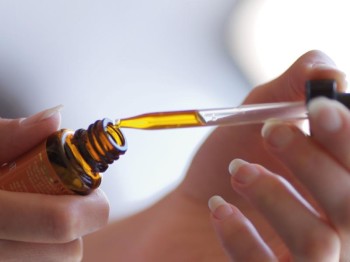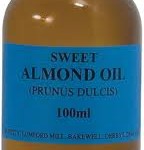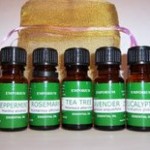Tips for Essential Oils – Aromatherapist Guide
Published on 6 July, 2011 | Aromatherapy
Buying Essential Oils
 The therapeutic properties of an essential oil depend on its chemical composition. When buying essential oils and in order to ensure that the oils you are using are pure and will have the desired effect, it is important to buy reputable oils and be alert to the sale of adulterated ((impure) oils.
The therapeutic properties of an essential oil depend on its chemical composition. When buying essential oils and in order to ensure that the oils you are using are pure and will have the desired effect, it is important to buy reputable oils and be alert to the sale of adulterated ((impure) oils.
Why buy high-quality oil?
High-quality essential oils are often very expensive. This is a reflection of a number of factors:
The time and effort involved in producing the plants
The time and effort in harvesting the plants – which depend largely on the parts of the plant that are used and their oil content
The costs of production – the extraction processes are often carried out on a small scale and are time-consuming and labour-intensive, as well as requiring specialized equipment.
By buying high-quality essential oils, you can be sure that they contain the correct constituents in the correct proportions and that they will have the desired therapeutic properties. Synthetic and diluted oils are less predictable and less likely to be therapeutically effective.
In pure oils, there are hundreds of chemical constituents that interact when they are mixed together, enhancing their individual properties in a process known as synergy. This process does not occur if synthetic oils are used.
Adulteration
Because pure oils are so expensive to produce, cheaper oils are now finding their way on to the market but these are generally of inferior quality due to adulteration. The main methods of adulterating essential oils are:
Adding a cheaper oil or diluting with alcohol or other spirit base
Adding a synthetic product
Substitution with a cheaper essential oil
Practices such as adding cheaper lavandin to lavender oil, or adding cornmint oil to peppermint oil are, unfortunately, widespread. Of greater concern is the use of substitute products or nature-identical synthetics: cassia oil has been found to contain synthetic cinnamic aldehyde, and red thyme oil may be wholly synthetic. If the oil is not what you believe it to be, its effectiveness, and even safety, can be compromised.
Essential oils are used for many other purposes than aromatherapy, including food flavouring and in certain industrial processes. The International Standards Organisation (ISO) have set standards for essential oils in industrial terms, but the quality of oils used in aromatherapy can be difficult to ascertain, although most forms of adulteration can be revealed through gas chromatograph analysis. This underlines how important it is to buy from a reputable supplier that carries out it’s own quality control testing.
Carrier Oils
Essential oils are too concentrated to be applied directly to the skin, so they are first blended with a lighter oil in order to dilute them and make them easier to apply. These lighter oils are known as carrier oils. The carrier oils used in aromatherapy are extracted from vegetable matter, nuts or seeds.
Types of Carrier Oils
Carrier oils are fixed, that is, they do not evaporate and have little or no smell. Cold pressing usually produces them. Although a certain amount of heating and cooling is involved, temperatures usually do not exceed 60°C so the characteristics of the oil remain largely unchanged. There are three main types of carrier oils:
Basic fixed oils, such as almond, grape seed, and peach kernel. These oils are pale, not too viscous and have very little smell. They can be used on the body and the face with or without the addition of essential oils
Specialist fixed oils, such as avocado, jojoba and wheat germ. These are usually darker, more viscous and heavier. They are generally used in small amounts, blended with lighter carrier oils.
Macerated oils, such as calendula and carrot. They are best described as plant extracts and, because of the way they are produced, have additional therapeutic properties. They are particularly good for the skin, and may be added in small amounts to a blend or applied to the skin on their own.
Purchasing and Storing Carrier Oils
It is important to use high-quality carrier oils, preferably ones that have been produced by cold-pressing without the use of chemicals. The more highly processed the oil, the fewer vitamins it will retain. Refining removes the elements most liable to deterioration, but these include the nutritious skin restructuring elements.
Carrier oils are perishable so it is wise to buy them frequently and in small quantities. Store them in airtight containers in a cool place, away from sunlight and moisture. The oils will deteriorate if they are exposed to air, heat, water and light, and will develop a rancid smell. Once exposed to the air, carrier oils will last for up to six months.
VISIT OUR AROMATHERAPY SHOP – ENTER HERE
ENROLL IN ADVANCED AROMATHERPY DIPLOMA COURSE – CLICK HERE
FOLLOW US ON FACEBOOK AND GET YOUR FREE CHAKRA AND AURA GUIDE – CLICK HERE




